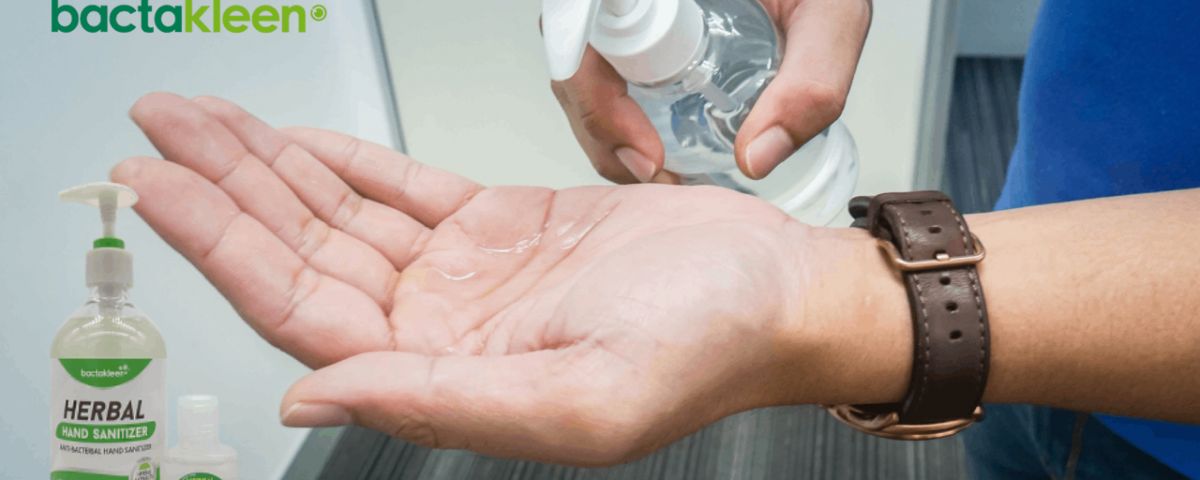- World's No.1 selling Anti Bacterial Treatment System!
- +971 56 3304466
- +971 55 9676070
- info@bactakleen.ae
Important Steps to Follow When Using an Alcohol-Based Hand Gel to Disinfect Your Hands

Does Dry Cleaning Disinfect Clothes and Rid Them of Pathogens?
November 22, 2020
How to Make Disinfectant Spray
November 26, 2020Sanitizers are man’s best friend right now. When you go to work, you take a commuter train or a bus when you go shopping, and you come in contact with surfaces. These surfaces could be contaminated with various pathogens, and there is even a chance that you can catch SARS-CoV2, which causes coronavirus, from these surfaces, if you are not careful enough.
Even though most business places like airports, malls, grocery stores, and hotels are now following the safety protocols laid out by the Centers for Disease Control and Prevention (CDC), it is still vital to assume that they don’t. Even if they regularly disinfect their business premises, it is safe for you to assume that they don’t and focus on keeping yourself safe. Whenever you go to a public place, you should bring a sanitizer with you. Hand sanitizer bottles are made in a way that you can even carry it in your pocket. As long as you are in public, try and make regular hand sanitizing a habit.
Steps to follow when sanitizing your hands
There are four steps to follow when using alcohol-based hand sanitizer; they are as follows:
-
The first step: make sure all organic matter like dirt is removed from your hands. Disinfectants are not effective on dirty surfaces because grime can prevent the disinfectant from reaching microorganisms, therefore rendering it ineffective. The same case applies to hand sanitizers. So if you handle anything that makes your hands dirty, don’t use a hand sanitizer instead of water, ensure to wash your hands first, and when they are grime-free, you can apply hand sanitizer. However, antimicrobial wipes (wet wipes) or towelettes can be used as an alternative if you don’t have water near you. Still, they are not as effective as hand sanitizers because they are only tested against bacteria.
-
Second step: apply a dime-sized amount of hand sanitizer to the palm of one hand.
-
Third step: rub your hands together and make sure you cover all your hands’ surfaces, including the spaces between your fingers.
-
Fourth step: rub your hands until hand sanitizer is absorbed.
Advantages of a hand sanitizer
Hand sanitizers come with several advantages that can make our lives easier. Some of them being: they require less time than when washing your hands, they not only require less time, but they also eliminate pathogens almost immediately. They are more accessible to you, so that saves you the time of searching for the sink. They don’t promote antimicrobial resistance, effective against microorganisms but less irritating to the skin, and some sanitizers can even improve skin condition.
Negative effects of using low-quality products
Using a low-quality hand sanitizer can have adverse effects on your skin, though. It can have the opposite qualities of what we have listed as advantages. It can cause itching, fine lines or cracks on your skin, scaling or peeling, etc.
What you should check for when purchasing a hand sanitizer
When purchasing hand sanitizers, you should ensure that it is EPA registered just like any other disinfectant. EPA approved sanitizers should have a solution of at least 60% alcohol. Any percentage below 60% is not effective against pathogens.




